Latest News From Health Monitoring
Keeping you up to date on recent initiatives, software enhancements, and the national conversation about public health
Keeping you up to date on recent initiatives, software enhancements, and the national conversation about public health
November, 2011 — This fall, listeria food poisoning from tainted cantaloupes resulted in 29 deaths across the United States—an event that WebMD called the “deadliest listeria outbreak in U.S. history.”
October, 2011 — When meteorologists predicted that Hurricane Irene would make a significant impact in New Jersey, the state’s Department of Health & Senior Services contacted HMS to request that a classifier be added to EpiCenter—to identify hurricane-related ER visits.
Pittsburgh, PA — Health Monitoring Systems (HMS) announces a major expansion in the coverage of its EpiCenter service to include all 8.7 million residents of New Jersey. HMS recently entered an agreement with the New Jersey Department of Health and Senior Services to connect every hospital in the state to the EpiCenter service, which electronically […]
This article from the HealthCare Economist is about a year old but nicely introduces the topic of Accountable Care Organizations (ACOs). Whether ACOs develop into a long term solution in improving the efficiency of delivering medicine or are added to the scrap pile of dead acronyms remains to be seen.
–kjh
Accountable Care Organizations (ACOs) are the latest rage in the health policy world. The question is, what are ACOs. The Urban Institute’s Kelly Devers and Robert Berenson try to answer the following question: “Can Accountable Care Organizations Improve the Value of Health Care by Solving the Cost and Quality Quandaries?”
The goal of ACOs is to pay providers in a way that encourages them to work together, to pay providers in a way that does not encourage supplier induced demand, and to create an organization that is rewarded for providing high quality care. What kind of organizations are currently poised to evolve into ACOs. This chart evaluates the prospects.
One question is why doesn’t Medicare just use their current Medicare Advantage program to accomplish these goals. In the Medicare Advantage program, Medicare pays a lump sum to private insurers and holds them accountable for all the medical care the beneficiary needs. However, there are three main differences between ACOs and HMOs.
The physician-centered organization makes much sense to many policymakers because “the resources that flow from the decisions physicians make with patients account for a major portion of overall health care costs, regardless of where the care actually takes place.”
Read more here …
When we formed Health Monitoring Systems in 2006, Regional Health Information Organizations (RHIOs) were a big deal. As a young company, we plotted an aggressive course and developed an internal White Paper on the topic.
For two months we researched, emailed and made calls — that was a significant investment for fresh, barely hatched company. The result of our white paper was clear.
RHIOs didn’t make sense. CHINs/HINs didn’t make sense. Even dressed-up tricked out, new-fangled language HIEs don’t make sense. They would just never become self-sustaining organizations. They couldn’t.
The benefit from the exchange of data was always tomorrow. Always over the river through the woods and 1/2 of the way to grandma’s house.
Since that time, we have done a lot of work exchanging healthdata. EpiCenter collects data from over 400 hospitals and submits it to public health for analysis. That’s health information being exchanged right there. MediCenter builds on that, reverses the data flow and provides medication history in an acute care setting.
EpiCenter is a purpose-driven example of health information being exchanged. Between previous experience and work here at Health Monitoring Systems, our staff has worked with about 600 hospitals, pushing and pulling syndromic data getting better and better results.
More importantly, it works because public health receives benefit and public health is willing to pay.
And that is the key point — it works because someone who is willing to pay receives a specific benefit and takes a real interest in it.
The current model being advanced for health information exchange doesn’t do that. So, it is hard for me to believe that it is somehow going to work.
That is a big question. It might even be a loaded one. To answer it we need to peel back a couple of layers and determine what information needs to be shared and who benefits from the sharing.
Take the two together and if the benefit outweighs the cost, then you have a formula that works.
I’ll put some thoughts together in another entry here. Until then email me (editor@hmsinc.com) or add your comment with your thoughts on what will make HIE work.
EpiCenter successfully detected the New Year. As clearly shown by the system’s “Alcohol Related” classification, the U.S had a merry holiday.
Syndromic surveillance isn’t just for detecting bio-terrorism, apparently. Previous festive events detected by syndromic surveillance systems include Super Bowl XL, when merry sports fans checked into Ohio hospitals on their way back to Pittsburgh from Detroit.
Tongue-in-cheek comments aside, Happy New Year to everyone. May it be a safe and healthy one.
–kjh
Our mission: Provide services that focus healthcare resources on existing and emergent threats to community health.
Our customers: State and local public health departments and health systems. We currently serve Connecticut, New Jersey, Pennsylvania, Ohio, Wyoming, and several counties in California, covering a total of more than 40 million people.
What we do: Monitor real-time health-related data for community health indicators. We collect data from nearly 600 hospitals and 3,600 ambulatory systems.
Support email:
support@health-monitoring.com
Emergency support: 1 (844) 231-5776
Additional guidance:
EpiCenter User Manual
700 River Ave., Suite 130
Pittsburgh, PA 15212
Corporate office: 1 (412) 231-2020
General calls: 1 (844) 231-5774
Emergency support: 1 (844) 231-5776

